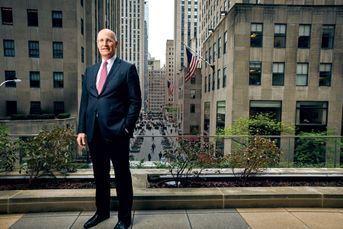Market doldrums: Welcome to Kondratieff winter
Theory promulgated by obscure Russian economist may explain current economic malaise — and falling stock prices
Standard & Poor’s downgrade of the U.S. credit rating may have triggered the latest stock market drop, but it was not the cause. A huge write-down of equity values was probably inevitable.
(Just an aside: Given S&P’s cluelessness in the Lehman debacle and its inability to discern dross from gold in the pools of mortgage-backed securities it rated, isn’t there more than a little chutzpah in S&P calling the government to task?)
Unpleasant though it may be, the stock market is doing what it’s supposed to do. It is valuing equities based on future earnings. And what the sinking market is saying is that future corporate earnings — which hinge on the future shape of the economy — look pretty dismal.
Would tax cuts (the Republican cure) or greater government “investing” (the Democratic cure) get the economy moving again? I doubt it, because our economic problems aren’t what most people think they are.
We’re not in a “conventional” recession; we’re in a Kondratieff winter.
As I wrote here almost three years ago, Russian economist Nikolai Kondratieff noted that capitalist societies experience long waves of booms and busts lasting about 50 to 60 years. He came up with this theory in 1926 (after devising the Soviet Union’s first five-year plan) and predicted the Great Depression of the 1930s in the West.
Unfortunately for Prof. Kondratieff, he also predicted that Western capitalism would come back stronger than ever. And for that, as well as for criticizing the USSR’s collectivist agricultural policies, he was sent to Siberia, where he was killed in 1938.
Most economists dismiss Kondratieff as a crackpot Russian in the tradition of mad geneticist Trofim Lysenko and others who tried to curry favor with the supreme Soviet leader — and supreme looney — Joseph Stalin. But if it’s a choice between Kondratieff and economists who devise elaborate and useless mathematical models, I’ll put whatever is left of my money on the mad Russian.
Based on his reading of capital cycles, Kondratieff believed that economic “spring” occurs after a depression and lasts about 25 years. The boom times are followed by a three-year recession and then 20 to 25 years of slower growth and more conservative political attitudes.
That “summer” period is followed by an “autumn” of seven to 10 years of flat growth and prosperity concentrated among the affluent.
All of which brings us to “winter” — an exhaustion of accumulated wealth and a sharp economic contraction followed by a long period of deflation. The bad times can last as long as 15 years, in Kondratieff’s view. But during that time innovations are quietly taking place that set the stage for “spring” and renewal of growth.
Whether he knew it or not, Kondratieff’s theory takes into account human psychology and the life cycle of capital goods, which turn out to be major drivers of the economy. Given our current overinvestment in capital goods, particularly housing, as well as the debt overhang in most of the developed world and the economic “autumn” that we’ve come through, it looks like we’re now in late December on the Kondratieff calendar.
The plunging stock market is telling us that it may be a long time until we see a crocus.
Learn more about reprints and licensing for this article.







